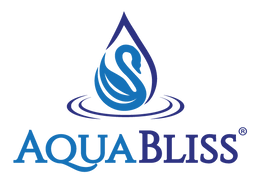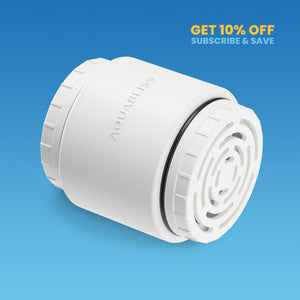Knowing All the Basic Types of Water
Water is often described as the ingredient to life. This necessary substance makes up about 71% of the earth's surface and constitutes 60% of the human body. Given that we lose water through our urine and sweat, we need to replenish our hydration regularly.
What are the types of water? And more specifically, How many types of water are there? One thing a lot of people don't realize is that there are different kinds of water.
In fact, not all drinking water is the same, meaning they have different prices, sources, and nutrients. Different kinds of water cater to various preferences and needs, offering unique qualities and characteristics.
Here we look at the eight most important types of water, exploring the diversity among different waters in terms of their origin, treatment, sources, properties, pH level, and more.
Let's get started.
8 Types of Water
Here are the eight different kinds of water:
1. Tap Water

Tap water is the stuff you get when you flush your toilet, run a faucet, or do household chores.
It is municipal water that is piped throughout your home and city to ensure that everyone, theoretically, has access to the piped water supply within the city limits. Its origin is often from surface water in the area and is processed.
Even though some people swear tap water is unsafe or tastes odd, it is generally safe everywhere throughout the United States because of regulations.
Not only is tap water good for you, but it will save you a whole lot of money. Tap is cheaper than other forms of water, like bottled water.
We should note that certain locations get contamination in their drinking water supply despite regulations, such as the reoccurring issue in Flint, MI. They also can be contaminated by plastic and other undesirable substances, such as pesticide residue.
Different waters have varying levels of purity and taste, so if you're concerned about the quality of your tap water, you might consider alternatives like filtered water or spring water.
If you are concerned that your location is not filtered correctly, you can get a home filtration system instead. 25% of tap water does not meet EPA standards.
2. Purified Water
Purified water is like tap water, but it goes a step further. It has an origin of tap or groundwater, and then it undergoes treatment with a water purifier to remove any harmful substances.
Now, when it comes to the best type of water, during this treatment process, they make sure to kick out all the bacteria, fungi, and parasites, making it safe for you to drink.
If you live in a city or area with a contaminated tap water supply, purified water will be the best bet. Purified water is still cheaper than many of the other options on this list, but it is still safe to drink and free of contaminants. Additionally, it offers many health benefits due to its cleanliness.
However, for most cities, tap water already undergoes a purification process, making purified water an unnecessary expense.
Whenever the purification system removes harmful contaminants from the water, it can also remove some of the helpful substances.
Although not all the vitamins and minerals will be removed, some of them may be depleted, resulting in fewer minerals compared to other different waters.
3. Distilled Water
Distilled water is a great option to ensure that your water is safe and free of contaminants. This type of water is commonly used in areas with contaminated tap water supplies.
Distilled water is different from other types of water because it is boiled and steamed. The steam is collected so that it can be condensed back into liquid form.
Throughout the distillation process, all contaminants, toxins, and minerals are removed through reverse osmosis, ensuring that the drinking water is completely safe and pure.
The conditions of reverse osmosis ensure water is suitable for drinking purposes and more. Once again, this approach to water is great for contaminated supply systems.
The one downside of distilled water is that it cannot contain vitamins and minerals. Though this is not harmful to your health, it certainly does not help your body, more specifically your teeth, either.
The vitamins and minerals in many different types of water, including tap, help keep your body strong.
4. Well Water
Well water is named after its origin and does not go through the water system. This source comes straight from underground sources, instead of surface water.
Well water is untreated because it's assumed the layers of rock filter the fresh water from the underground source. In rural areas, this source may be the most effective and cost-efficient type of water.
In order for the water to be safe, you must go through several steps of water testing. This includes testing the pH level, bacteria, and nitrates within the supply.
For optimal safety, it is best to install a filtration system or water purifier with your well water too.
Unfortunately, many people do not put their well water through rigorous testing because they assume that water from the ground is safe. Even if you live in a remote area, this is not the case for many well water sources.
Bacteria and parasites can infiltrate the water system. So, well water, like many other different waters, may be unsuitable for human consumption.
5. Mineral Water

Most types of mineral water come from a mineral water spring and naturally contain different mineral content like calcium and sulfur. These minerals have quite a few health benefits.
For example, mineral water aids in digestion and other crucial bodily functions.
Additionally, for natural mineral water to be labeled as such, it must be taken from a mineral water spring and undergo a number of tests to confirm it is safe natural mineral water.
As a result, natural mineral water tends to be reliably safe to consume, and many brands sell it.
The main downside to mineral water is its cost. Mineral water is incredibly expensive, especially since a well-balanced diet should give you the essential minerals that you need to be healthy and happy.
If you are on a budget, healthy water like mineral water is not the route you should go. Eat a healthy diet instead of buying boatloads of bottled mineral water.
6. Spring Water and Glacier Water
Just like some of the other different kinds of water we’ve discussed, spring and glacier water are named due to the water source. As I'm sure you figured, spring water is taken from a spring, while glacier water is taken from a glacier.
You will almost always find spring water or glacier water sold bottled. This type of water does not pass through a community water system.
Theoretically, natural spring water or glacier water is supposed to be clean and provide various minerals, similar to other different waters like mineral water. Mineral water springs provide the added minerals for the drink to constitute mineral waters.
A variety of brands sell water from spring or glacier sources.
However, some spring water is unfiltered and untested, meaning it poses potential health risks if it contains harmful contaminants. Additionally, spring water is way more expensive than tap water.
If you drink too much of it, you will spend a whole lot of money on spring water.
7. Sparkling Water
Something fewer people are familiar with is Sparkling water, soda water, or carbonated water, which is water that has been infused with carbon dioxide gas while under intense pressure.
It has the same carbonation effect as soda without added sugars or flavoring.
One benefit of sparkling water is that it does have a more enjoyable drinking flavor, depending on your preference. If you like carbonation, you may drink more sparkling water than tap water.
Some people do not enjoy sparkling water, however, for the same reason.
Additionally, sparkling water often is mineralized, meaning that it comes with minerals in your carbonation. Normally, the mineral content is too low for it to make a meaningful difference in your diet.
More so, sparkling water can include flavorings and sugar, making it unhealthy. It is expensive as well.
8. Flavored Water

Finally, the last type of water on our list is flavored water. Flavored water is pretty self-explanatory and something everyone knows. It is flavored with flavorings and sweeteners.
The flavorings can be natural or artificial, while the sweetener can be artificial or pure sugar.
If you cannot get over the taste of plain water sources, drinking different kinds of flavored water can be a great way to get your needed H2O. Because of the more likable taste, flavored water is much easier to drink and enjoy.
For people who don't drink water as is, flavored water can be a great option, though it may not be the best choice for everyone. There are many brands to pick from, offering different waters to suit various taste preferences.
The obvious downside of these types of water is that they come with sweeteners and sugar. If you drink a large amount of flavored water, you can easily pack on the pounds. This is especially dangerous to those who have diabetes.
Flavored water can also be expensive if you buy it bottled. You can decrease the price by selecting flavoring packages instead of bottled water.
Choosing the Best Water for Your Needs: A Personal Decision
In most cases, which type of drinking water is the best type of water for you comes down to personal preference. I personally like tap water and sparkling water the best and absolutely detest flavored water, but that is just me.
For you, you may enjoy different types of water like natural mineral water.
What matters most is that your water is safe and not contaminated. So long as you are consuming safe drinking water and hydrating your body as needed, pure water is a great idea!
If you want to improve the health of your water and reap the benefits for years to come, AquaBliss is the go-to source for home water filtration systems that bring European comfort to the American bathroom.
Want to improve the water in your home? Pick up a water filtration system from AquaBliss and experience the difference in the different types of water it can provide.







